If reading about the people I've visited inspires you to help, you can donate to the Center for Farmworker Families. Every penny given goes directly to these families for clothes, shoes, food, school supplies, and more.
A few days into our stay in Cuquio, we became friendly with one of the girls who worked at our hotel. I'll call her Maria. She was adorable and sweet and when she spoke, the words came out of her mouth like laughter. We told her what we were doing and where we were going. When we told her which rancho we were visiting on our last day, she said, "That's my rancho!" We chipped in to pay her what she would have earned at work that day so she could take the day off and come with us.
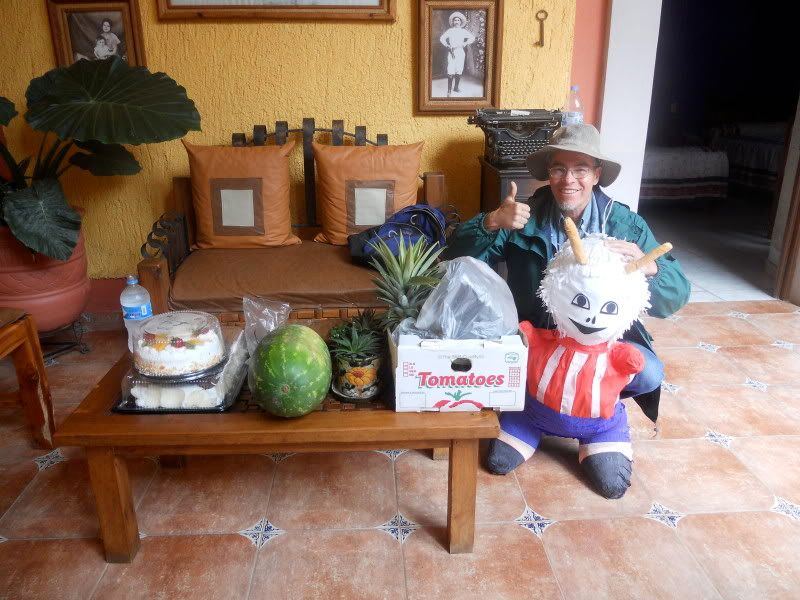
All ready to go for our last rancho visit
In every other village, Ann had longstanding relationships with the families we were visiting. Here, it didn't seem that way. We rolled into the rancho and stopped in front of the tiny convenience store. Maria, who told us that about half of the homes in town were either empty or full of only women with children because the men had gone to the U.S., went around and collected all of the kids, telling them there was a pinata and cake for them.
She directed us to a nearby volleyball court, and pretty soon the adults in the town assembled a number a beautiful, handmade chairs for us to sit in while we waited for the children to come. It didn't take long once news got around that there was a pinata in town. One of the adults asked me what we were doing here, but I don't think the kids wondered why there were a bunch of strange gringos here with a pinata. Why look a gift horse in the mouth?

Kids eagerly waiting for the pinata
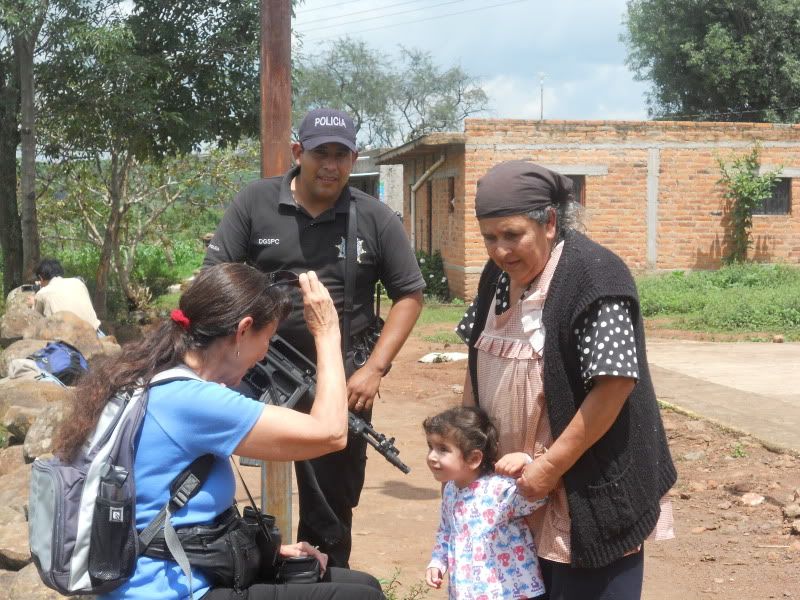
Ann Lopez meeting one of the children
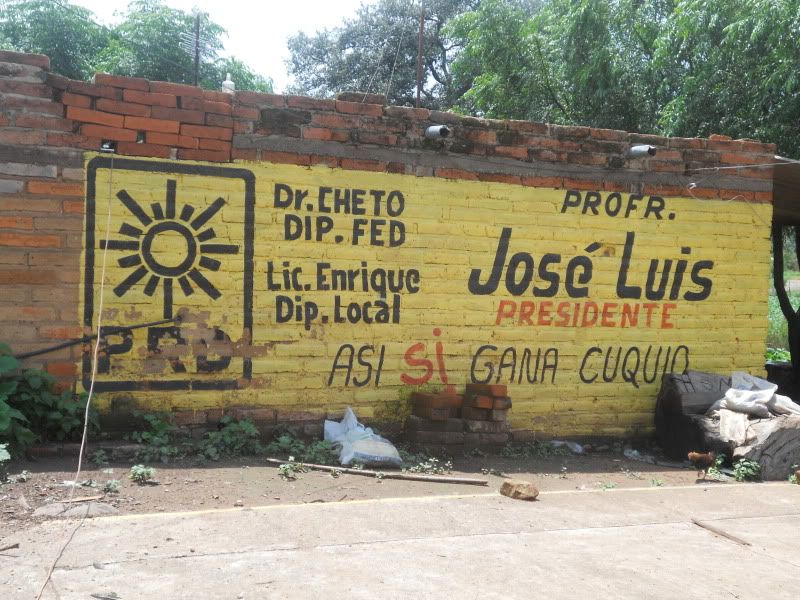
A sign for one of the three Mexican political parties painted on a brick wall next to the volleyball court. We saw signs like this one everywhere, mostly for PRI, but some for PAN and PRD too.
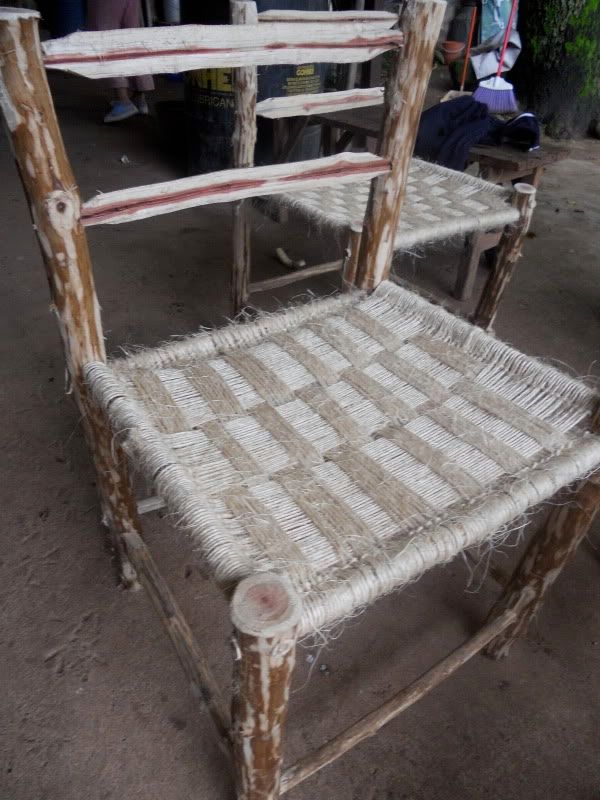
One of the gorgeous handmade chairs
While we were waiting, I walked into an area full of chickens to begin taking stock of the local food resources. Something here was wrong. There were rows and rows of handmade wooden cages with one rooster in each cage. It looked like rooster jail. They had too many roosters. You need about one rooster per 8-12 hens. In these towns, where food is precious, raising extra roosters was a waste of grain. This had to be a cockfighting operation.
The cops confirmed my hunch, and said that cockfighting was illegal here. However, they didn't charge anyone with cockfighting as long as they were discreet about it. The cops took no action here. Later a woman in town verified that these roosters were indeed for cockfighting. They were absolutely gorgeous roosters, but many were missing their combs.
One of the men from the village found a rope and helped hang the pinata. We arranged the kids in a line according to height, letting the smallest ones have the first crack at the pinata. The very smallest children weren't sure what to do, so one of the Mexicans in our group explained the process to the kids. Then we let them go at it. Like the pinata from the day before, this one was very well-made and difficult for the kids to break open. Every kid got at least one turn, and most got two before the pinata was destroyed.
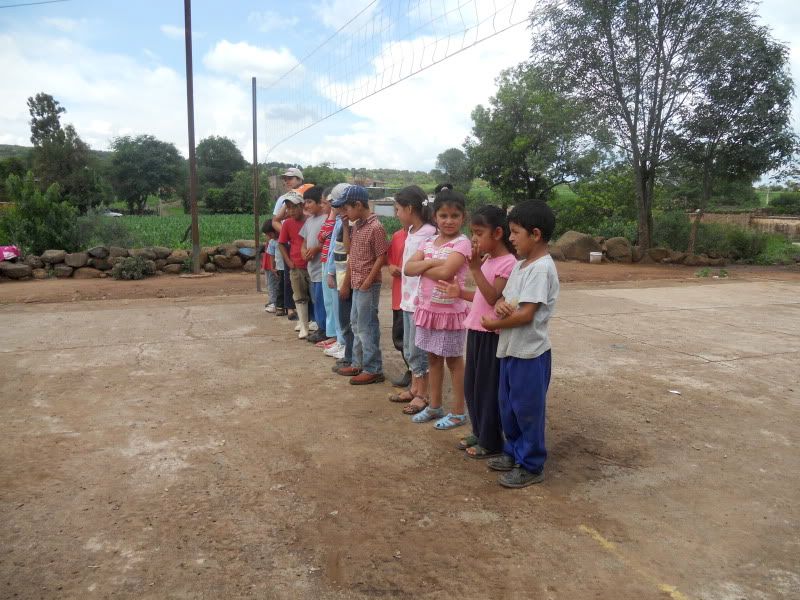
The kids in line, waiting for their turns
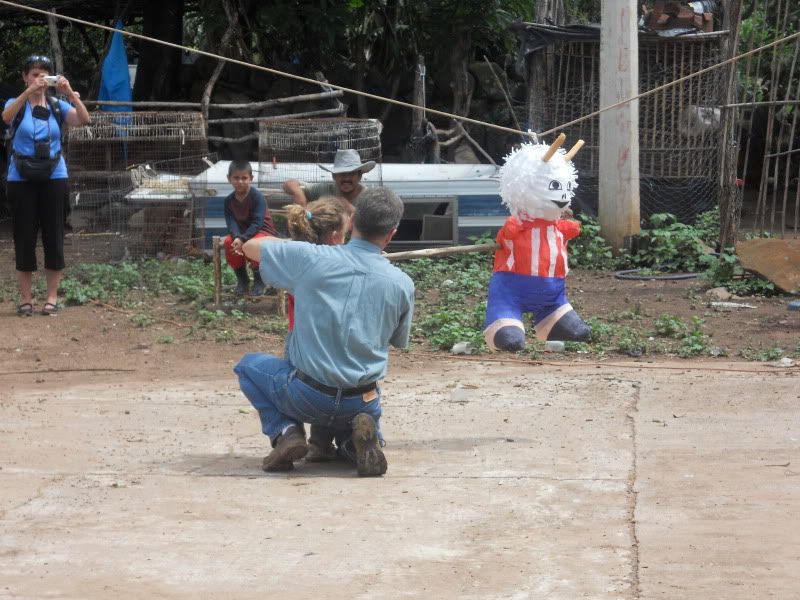
Gus explaining how to hit the pinata
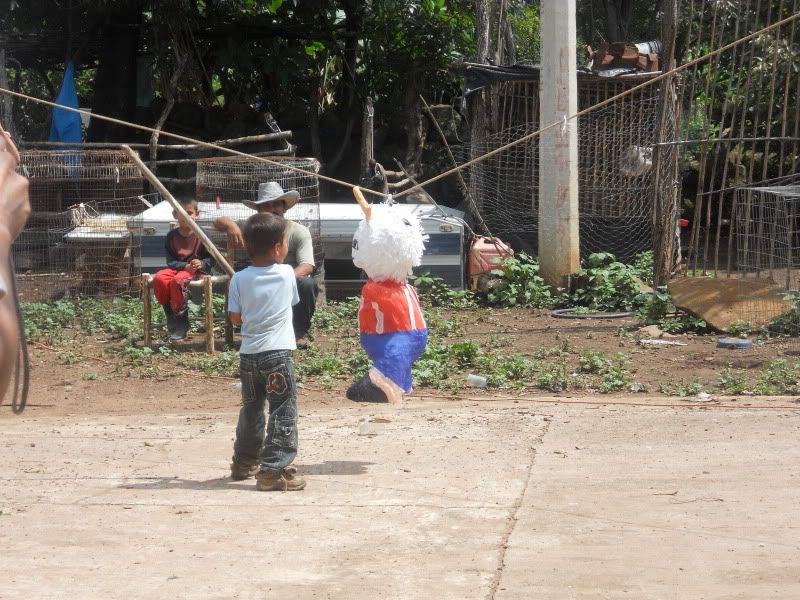
This little guy gets it.
The shortest child in line was too shy to hit the pinata. He ran away from it and sat down next to me. Once the goodies began to rain down, he didn't run after them like the others. "Va! Va!" I encouraged him. When he didn't, I ran out and grabbed him a lollipop, unwrapped it for him, and gave it to him. After the pinata, the chickens came out to see if there was anything they could help clean up. One packet of marshmallows had broken open and they were all too happy to eat them.
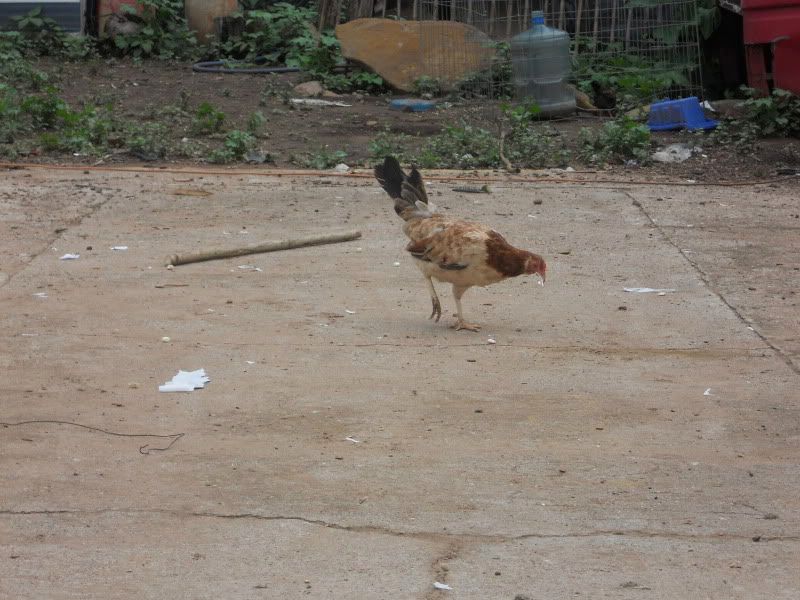
Chicken cleanup duty after the pinata
One thing I noticed in every town was that the kids never threw their trash away. In almost every case, the kids just tossed all of their wrappers, napkins, and plastic forks right on the ground. The ranchos didn't seem to have any trash service, and only one of them had prominent large garbage cans staggered around for people to toss their trash into. In one rancho, a child stashed her plastic fork and napkin from the cake in fireplace. In another rancho, the adults gathered the trash and burned it.
My next job was handing out the toys to the kids. Typically, we would line the kids up and let them take turns picking out a few toys each until the toys were all gone. My Spanish wasn't good enough to give the kids instructions and to then enforce them. I got a Spanish speaker in our group to tell the kids to form a line and then said "Escoge tres" ("Choose three") to the first few kids. The toy selection quickly devolved into a free-for-all, with all of the kids gathered around the toys, picking what they wanted, all at once. Oh well, no harm done.
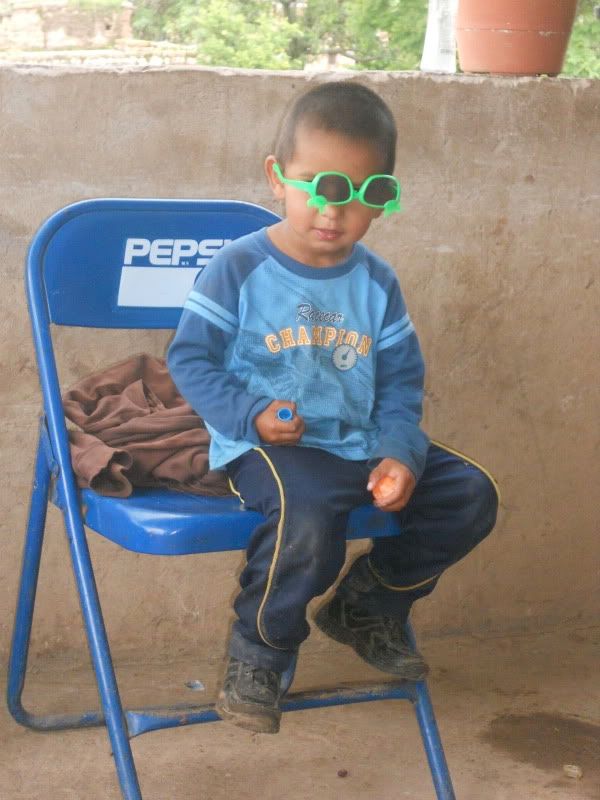
A little guy with his new toys. He's holding a whistle in one of his hands, and he spent the rest of the day blowing it. My apologies to his parents. Notice the Pepsi chair.
We gave out the rest of our stuff - cake, watermelon, stuffed animals, toothbrushes, school supplies, clothes, shoes, etc - and our group prepared to go on a hike. I decided to hang back and skip the hike because I was wearing sandals and a skirt. I took a seat at the local store and before long, wound up in conversation with the store owner and, later, his wife.
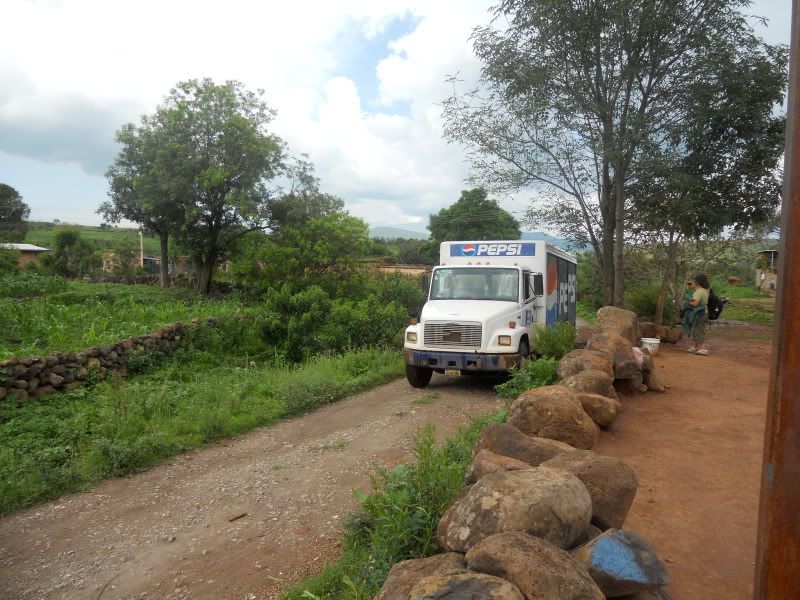
A Pepsi truck rolls through town
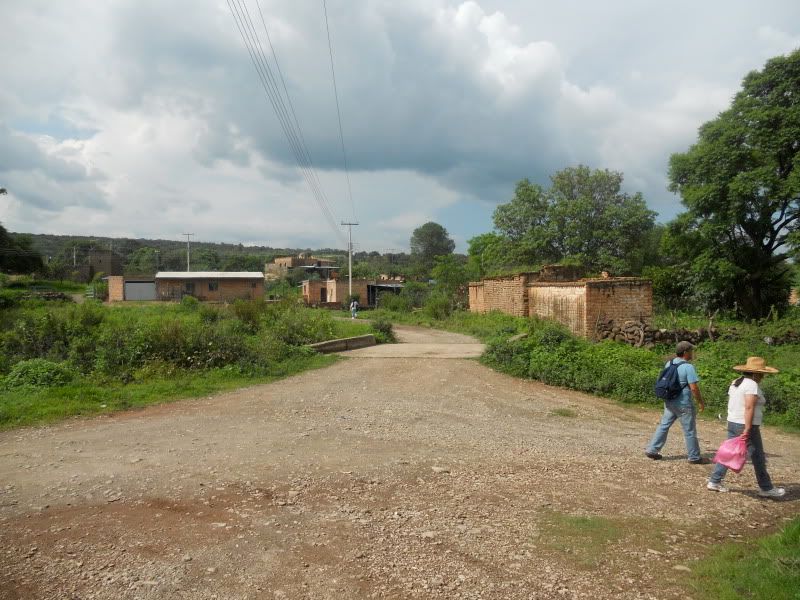
A view of the rancho
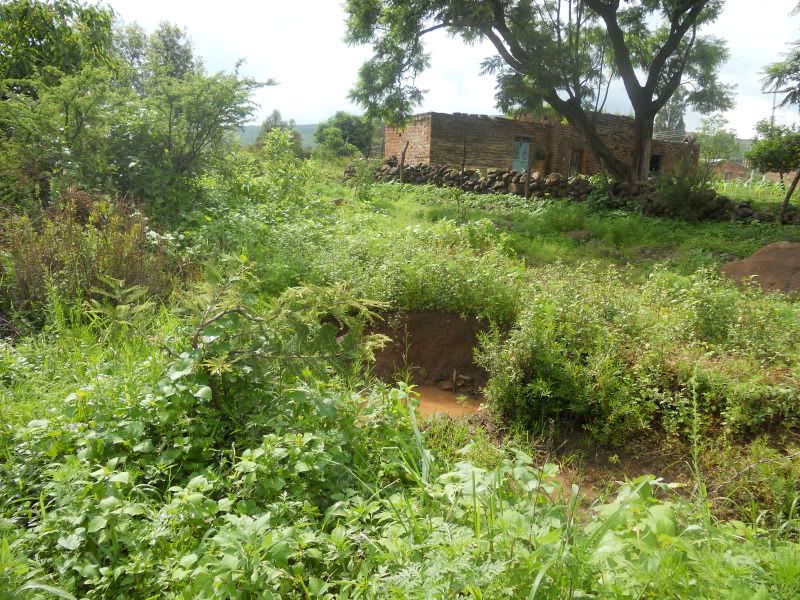
The creek everyone hiked near. Notice the color of the water, full of silt from eroded soil
I began by asking the store owner about the milpa (cornfield) next to the store. It was planted with a black variety of maiz criollo. I excitedly told him that I also planted black Mexican corn at home in my garden. Then I began asking him about food production resources in the town.
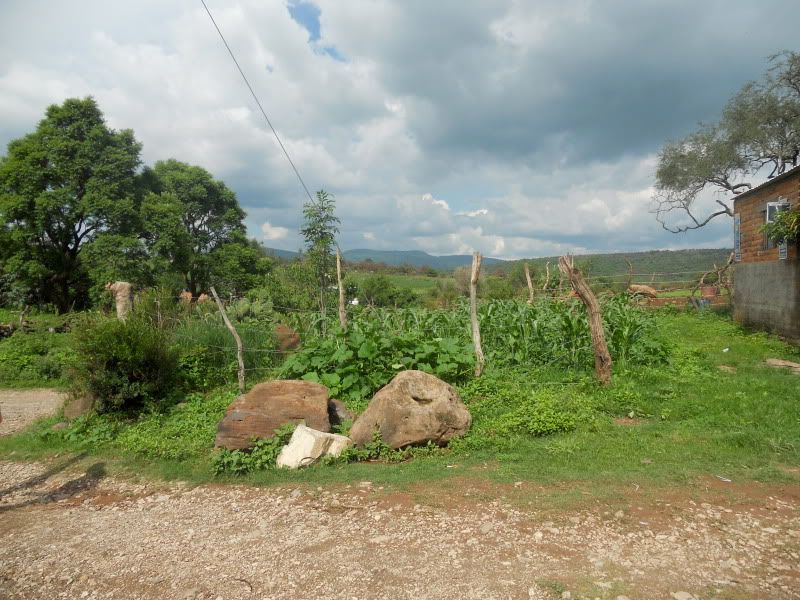
The milpa next to the store
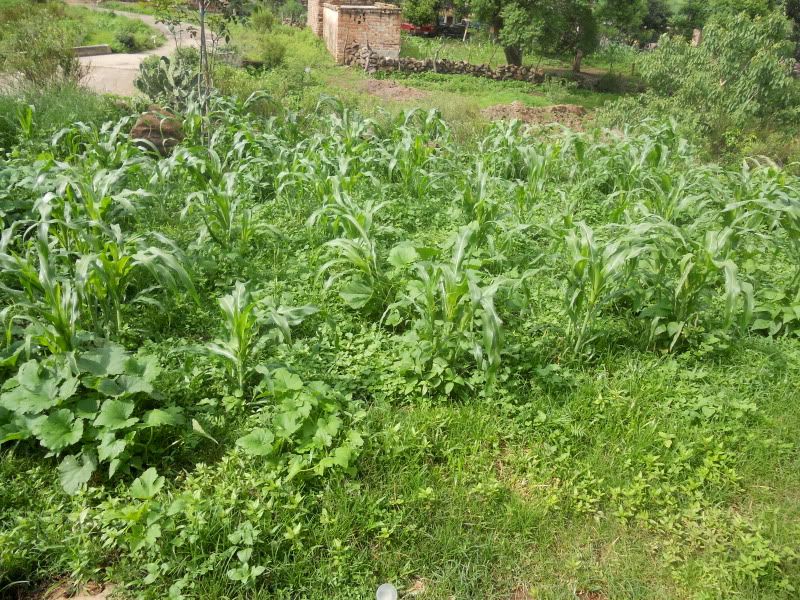
Another view of the milpa
The store owner told me about a number of animals and fruit trees in the town. For fruit trees, they had avocados, lemons, orange, sapote, and peaches. There were cows for milk (to keep) and for beef (to sell). There were three pigs, at least one horse and one mule (maybe more, and perhaps some donkeys). When I asked if they were his, he almost invariably always told me they belonged to a brother. The cockfighting brother had about 100 chickens in all. Later, the store owner showed me some ducks and his wife mentioned rabbits.
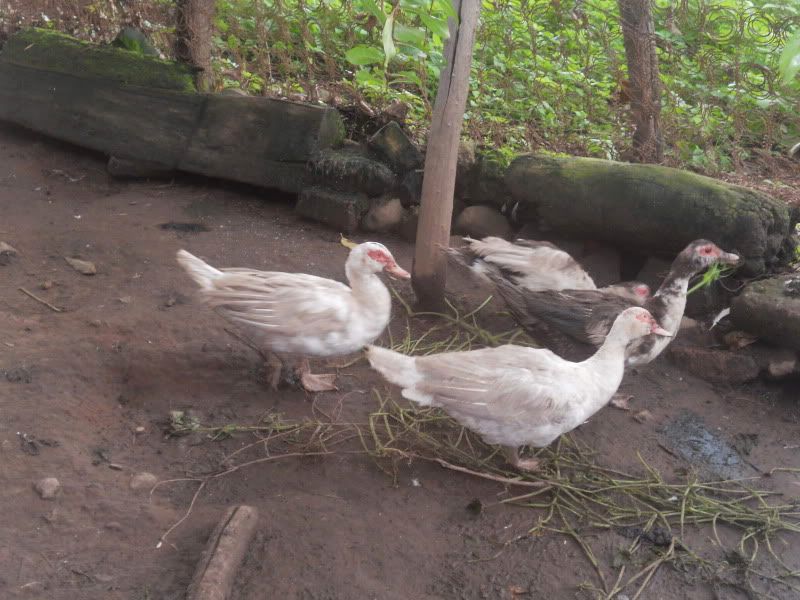
Ducks

Probably a mule
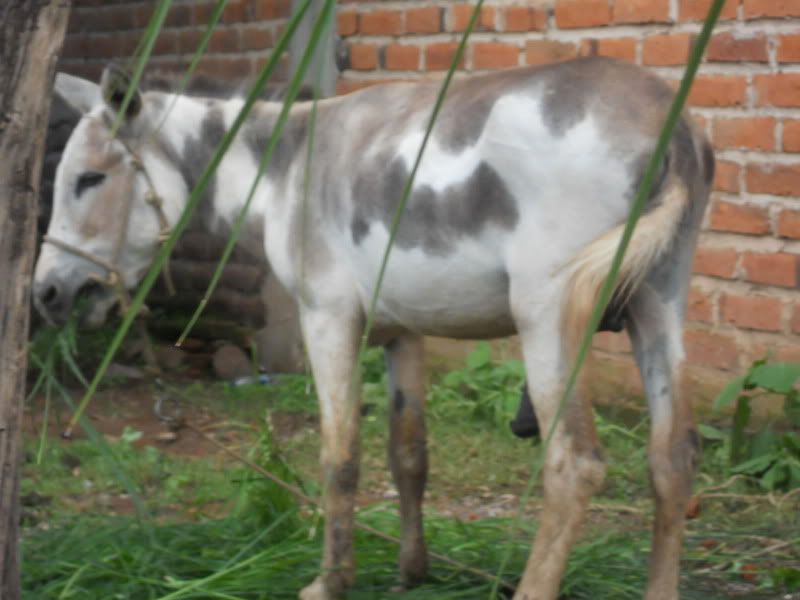
Probably a donkey
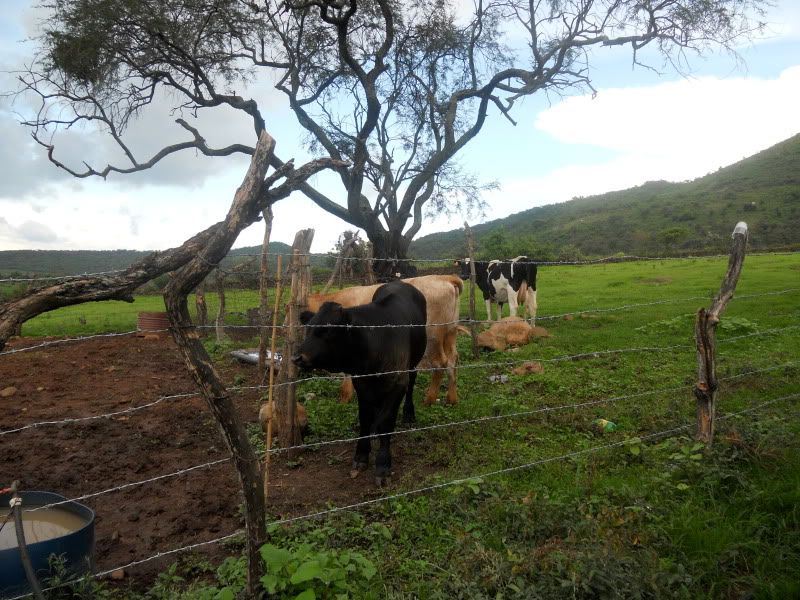
Cows
Additionally, when it wasn't camote season (the wild tuber gathered throughout the fall, winter, and spring), the store owner liked to go fishing. He told me it took him two hours to take a donkey to the river, and he brought back fish. However, he later told another member of our group that he didn't like the taste of the fish so he gave them away to others who did.
I asked to see the pigs, and we set off on a short hike through a few cornfields (which also belonged to his brother) to see them. We passed a small pond, and I asked if there were frogs. Ann tried to check in each rancho if the frogs had been killed off by agrochemicals. Typically, she told the kids she would give a dollar to anyone who could bring her a frog or a toad and then release it in the same place they found it. In the pond, the store owner found two frogs to show me.
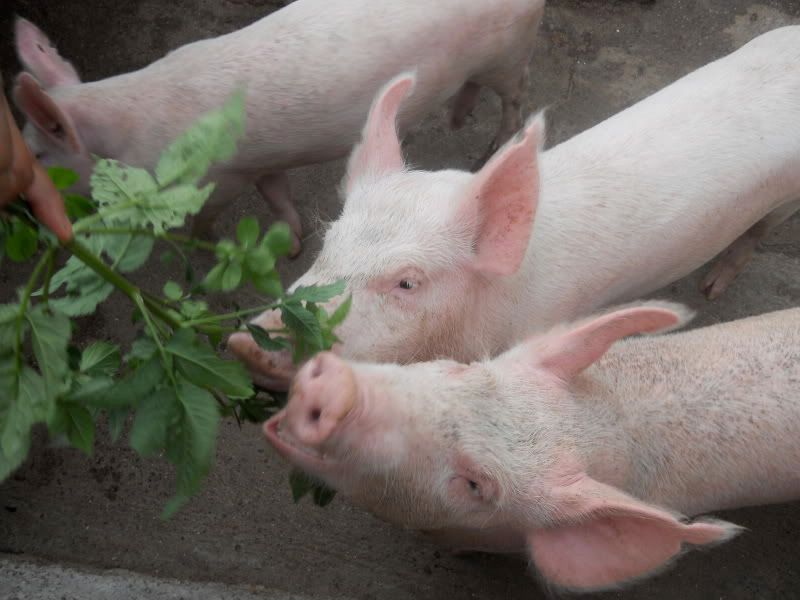
The pigs
As we came back from seeing the pigs, we passed cornstalks with beans growing up them. I asked if they had quelites, beneficial weeds, in their milpas and the store owner said yes. During the year, campesinos can eat edible weeds that are allowed to grow in the milpas in times of need. Then we came to a few women shelling red corn for posole. They also had some cacti for nopales, a very healthy food commonly eaten in this region.
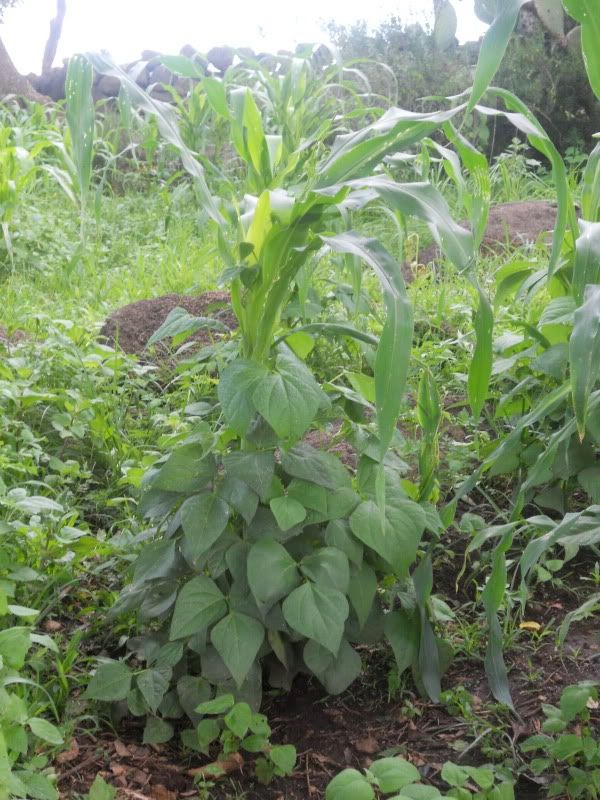
A great example of beans growing up a cornstalk
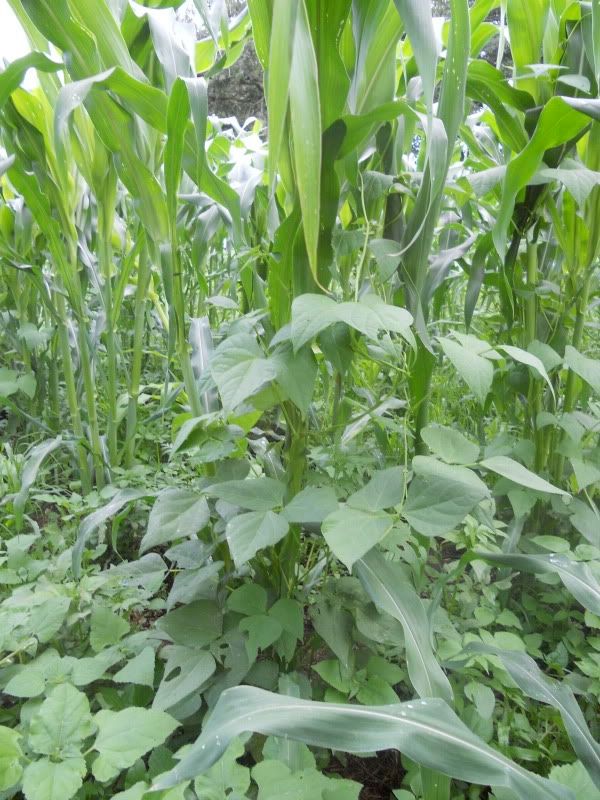
Another cornstalk with beans growing up it

Red corn mazorcas (ears of dried corn) for posole
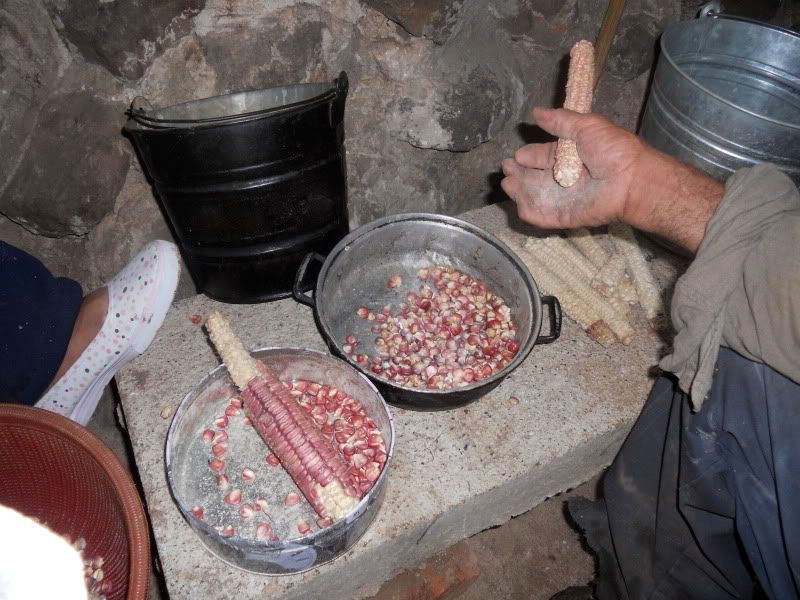
Shelling the corn
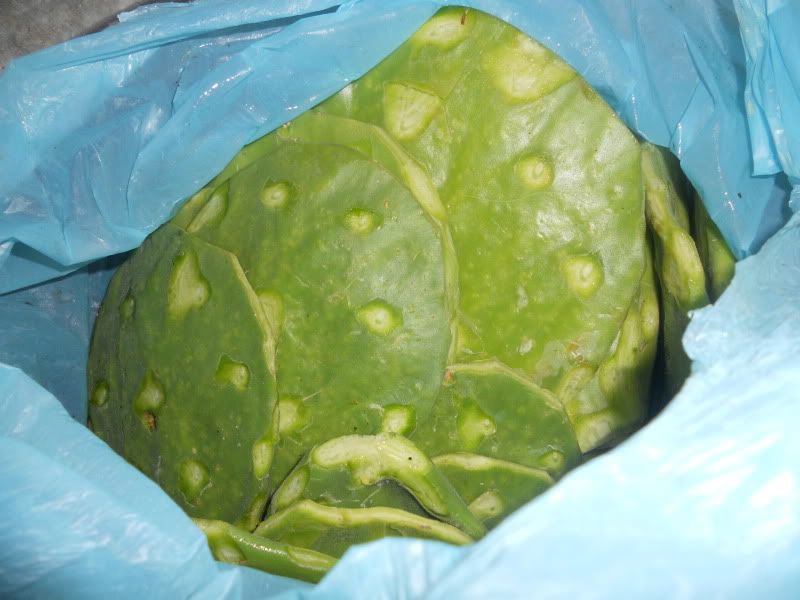
Nopales
We then walked back to the volleyball court, where the furniture making cockfighting guy was working on a new chair. By this time, the group had returned from their hike. Another member of our group and I began asking about the family of these brothers. They told us that there were five brothers and two sisters in the family. Maria, who worked at our hotel, was their cousin.

The owner of the roosters, who also happened to be the furniture maker, making a new chair
Their mother, four brothers, and one sister lived in the rancho. One sister lived in Cuquio and one brother had been in California for a long time. The store owner had gone to California seven times to work in construction for many years, sending money back to build his store. He hadn't seen his brother in the U.S. for about four years and couldn't because none of the brothers had paper to go back and forth across the border. They spoke on the phone once or twice a month. The family members who lived in the rancho all shared their food resources, so everyone got eggs, milk, and occasionally, meat. I assume they had enough corn to eat too, if they had enough to spare to feed to all of their extra roosters.
The only downside of this rancho's prosperity was the amount of junk they were able to afford. The store offered a few healthy and necessary items like eggs, cooking oil, and toilet paper, but mostly, it sold junk. This is a common phenomenon in the ranchos we visited: campesinos produce and sell healthy, whole foods in order to afford processed junk from local stores like this one.
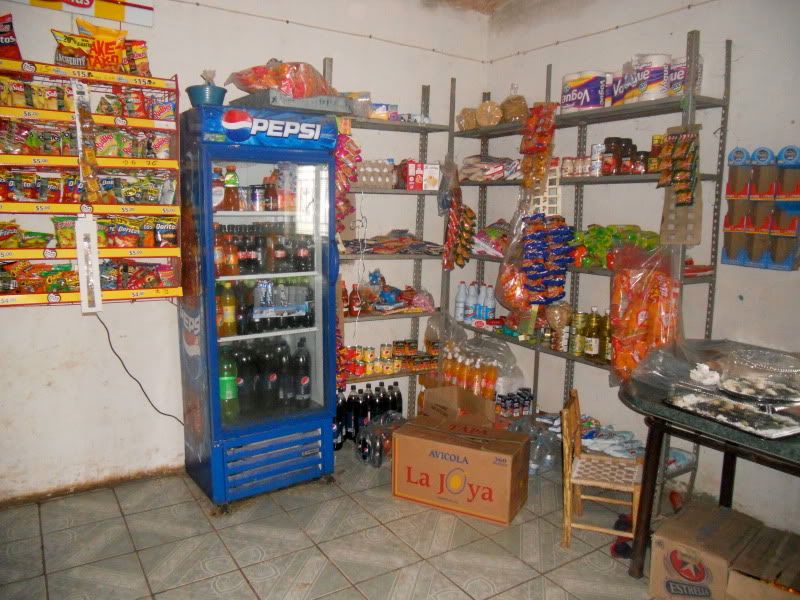

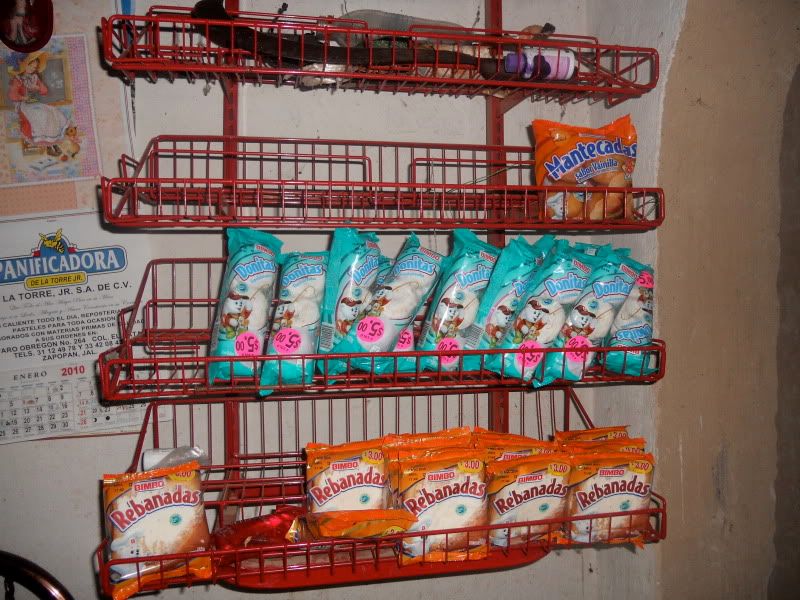
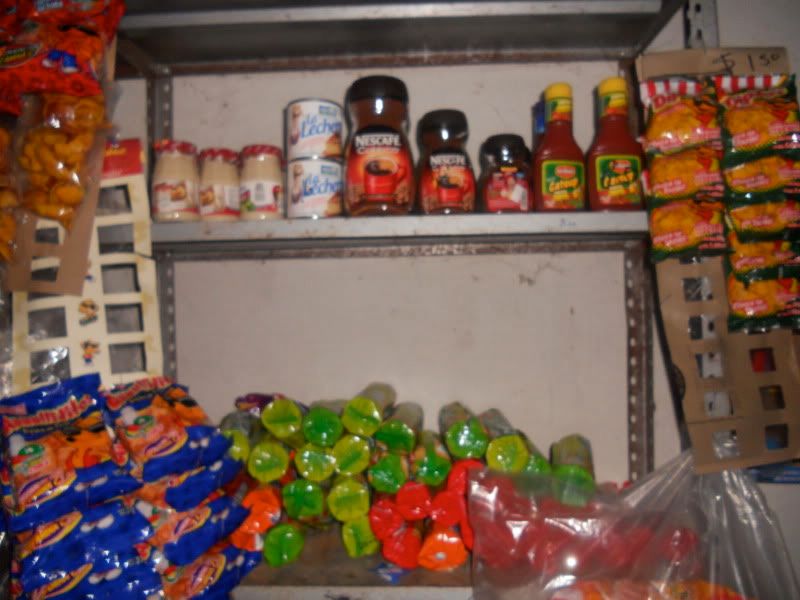
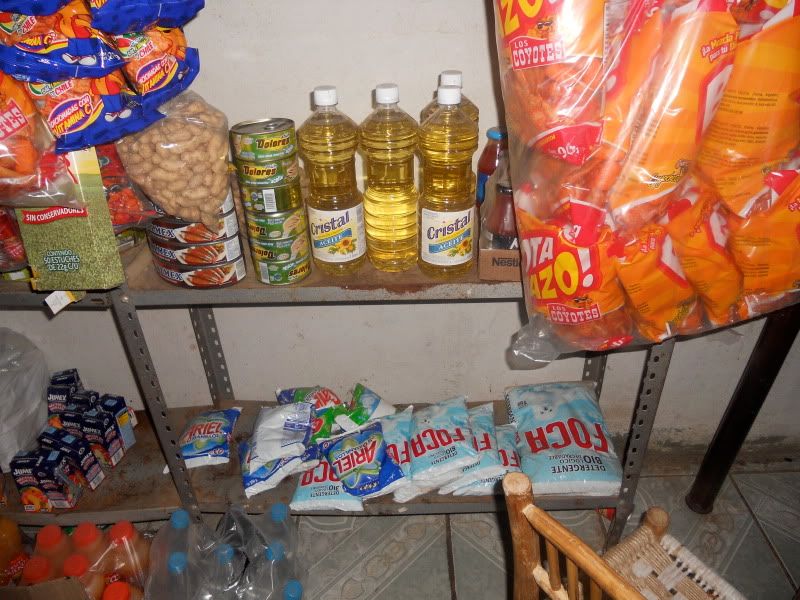
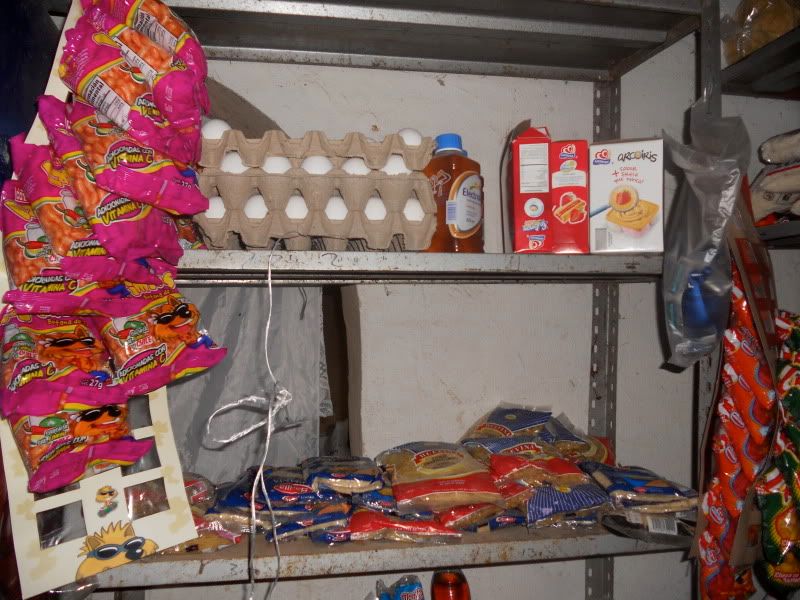
A few other noteworthy things took place while I chatted with the store owner and his wife. At one point, we spoke about and lamented the amount of racism in the U.S. against Mexican immigrants. He spoke knowingly about the wealth and excess in the U.S., telling me about movie stars' multimillion dollar mansions in Beverly Hills. Then, after clearly denouncing racism, he told me that black people were lazy. I told him that I didn't think so. He said they were. No, I said, not the ones I know. "Would they work in the fields?" he asked. "Yes," I told him - but not if they were being exploited. Americans would be willing to do that work if they were paid fairly and given fair working conditions.
Shortly before we left, the store owner's wife came outside to chat. She had three small children, she told us, and did not want any more. Then she said something that I didn't quite pick up, but I think she was saying that she would have more kids if God gave her more. Birth control is nonexistent in these little ranchos.
Last, I inquired about the town's water supply. Half the town used wells. Her half had a manmade lake that they used to collect water and then pump it to their homes. They used this water for bathing, irrigation, and everything. That was the first I had heard of any rancho using water for irrigation. Typically, the people we met grew one corn crop per year during the rainy season. Sometimes campesinos grow a crop of garbanzos after their corn harvest, a crop that requires less water. Then their land is dry and they allow cattle to graze on their crop residue while waiting for the rains to come in the next year.
She told us that she adds calcium carbonate to the water before drinking it to disinfect it, but for the past several years she had bought her drinking water in 5 gallon bottles from Cuquio. (I don't think adding calcium carbonate will help disinfect the water, although it would likely be less harmful to drink than bleach, used in another rancho we visited to disinfect water. Calcium carbonate, referred to as "cal" in Mexico, is the main cause of what we call "hard water" and it's a common calcium supplement, although it can be toxic in large doses.)
Some families had received composting toilets, given out for free by the municipal government. She wanted one but did not get one. When she asked the city for one, they told her they were done distributing them. Her family had to go to the bathroom outside.
With that, it was time for us to go. We hopped in the back of our pickup truck, grateful that it was no longer raining (as it was on the drive out), and headed back to the hotel.
No comments:
Post a Comment